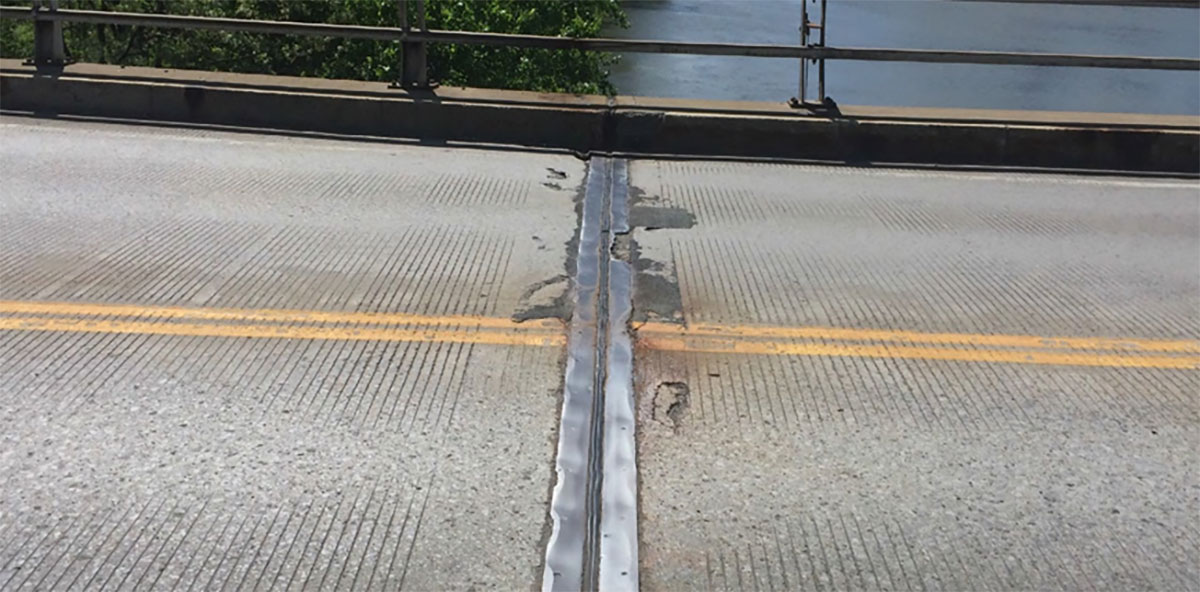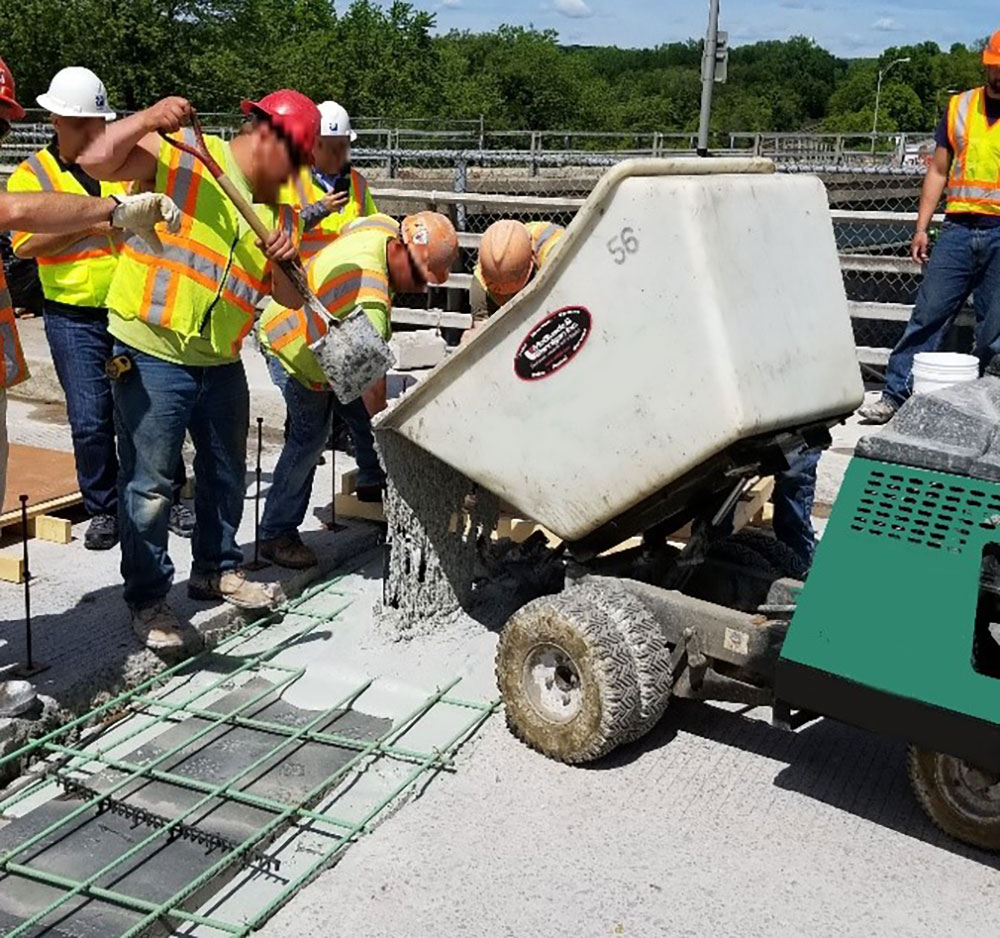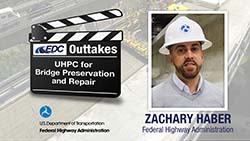April 15, 2021
Innovation of the Month:
Ultra-High Performance Concrete for Bridge Preservation and Repair
This month, we're discussing ultra-high performance concrete (UHPC) which has already seen widespread use for field-cast connections between prefabricated bridge elements as featured during EDC-4. Using UHPC for bridge preservation and repair is a newer application that helps agencies at every level maintain or improve bridge conditions cost-effectively. Last week, we discussed how the Texas DOT rehabilitated a bridge using the UHPC beam end repair technique and this week, we highlight a State using UHPC link slabs as part of bridge rehabilitation.

Since 2013, the New York State Department of Transportation (NYSDOT) has completed or let project projects that have included over 100 UHPC link slabs as an alternative to conventional expansion joint replacement or repair solutions. One example was the rehabilitation of several bridges over the Mohawk River in Ilion, NY. These bridges, which were over 50 years old, exhibited extensive superstructure corrosion, including steel girder ends, concrete pier deterioration, and bearing damage. The structural damage was caused by expansion joint failure plus deicing chemical use.

The existing expansion joints couldn't prevent water and the deicing materials from reaching the substructure, so UHPC link slabs, which would eliminate most expansion joints, were a warranted replacement. Another benefit of the UHPC link slabs was improved rideability.
A section of the existing concrete bridge deck around each joint was removed and epoxy coated reinforcement along with a compressible seal was installed. After additional preparation of the link slab location, the UHPC was mixed on site and poured into place under supervision of a certified inspector. Once the other bridge rehabilitation elements were complete, the UHPC link slabs were installed, successfully creating a contiguous structure that will protect the bridges' substructure from future damage and corrosion.
Implementing UHPC link slabs in an area like upstate New York, where harsh winters place high demands on structures, made the project an excellent representation of how UHPC link slabs could be used in other New York bridges with similar deficiencies.
To learn more about NYSDOT's experience with UHPC link slabs, contact Zach Haber or Mark Leonard, EDC-6 UHPC team co-leads or visit the team's EDC website.
EDC Outtakes—Ultra-High Performance Concrete for Bridge Preservation and Repair
EDC Outtakes—a series of short interview videos—give insight into the current round of EDC innovations from State practitioners and FHWA personnel. In our latest edition, Zach Haber, UHPC for Bridge P&R team lead, discusses the focus for the EDC-6 initiative compared to previous efforts with UHPC.
Keep reading EDC News for future editions of EDC Outtakes!
Arizona DOT Dust Detection System Named as a "Gamechanger"
The Arizona Department of Transportation's (ADOT) first-of-its kind dust detection and warning system has been named one of the "Infrastructure Gamechangers" by the American Society of Civil Engineers (ASCE). The organization recognizes groundbreaking projects that represent the latest advancements in the way engineers plan, build and adapt to infrastructure needs.
Driving on Interstate 10 between Phoenix and Tucson during summer monsoon months can be hazardous when windblown dust reduces visibility, causing dangerous driving conditions. This technology features a series of programmable speed limit signs, overhead electronic message boards, and speed feedback signs. The sensors are complemented by a weather radar that can detect storms more than 40 miles away. The detection system, which was completed by ADOT on a 10-mile stretch of Interstate 10 between Phoenix and Tucson in 2020, is among only four highway-related projects recognized nationally this year by the ASCE.
Read more about the Arizona dust detection system or contact David Johnson, FHWA Office of Operations, for more information on this and other Weather Responsive Management Strategies.
Stay Up to Date on the EDC Innovations That Interest You Most
EDC teams are always on the move! If you blink, you could miss out on important webinars, case studies, tools, videos, and more. To never miss information for the EDC innovations that interest you most, visit the subscription page and select the topics you'd like to receive updates on directly from the teams that coordinate them.
This week, we're featuring a recent update from the EDC-6 Strategic Workforce Development (SWD) team. The update discusses the role the University Transportation Centers (UTC) Program plays in developing tomorrow's workforce. In addition to undergraduate and graduate students, many UTCs offer outreach and education programs to K-12 students about transportation. The update also discusses the FHWA on-the-job training supportive services program, certification opportunities for engineering technicians and technologists, project management training by the Associated General Contractors of America, and recent events involving the Strategic Workforce Development initiative.
Sign up to receive future messages from the SWD. If you have additional questions on SWD, please contact Karen Bobo, FHWA Office of Innovative Program Delivery Center for Transportation Workforce Development.
About EDC
Every Day Counts, a State-based program of the Federal Highway Administration’s Center for Accelerating Innovation, works with State, local, and private sector partners to encourage the adoption of proven technologies and innovations to shorten and enhance project delivery.



